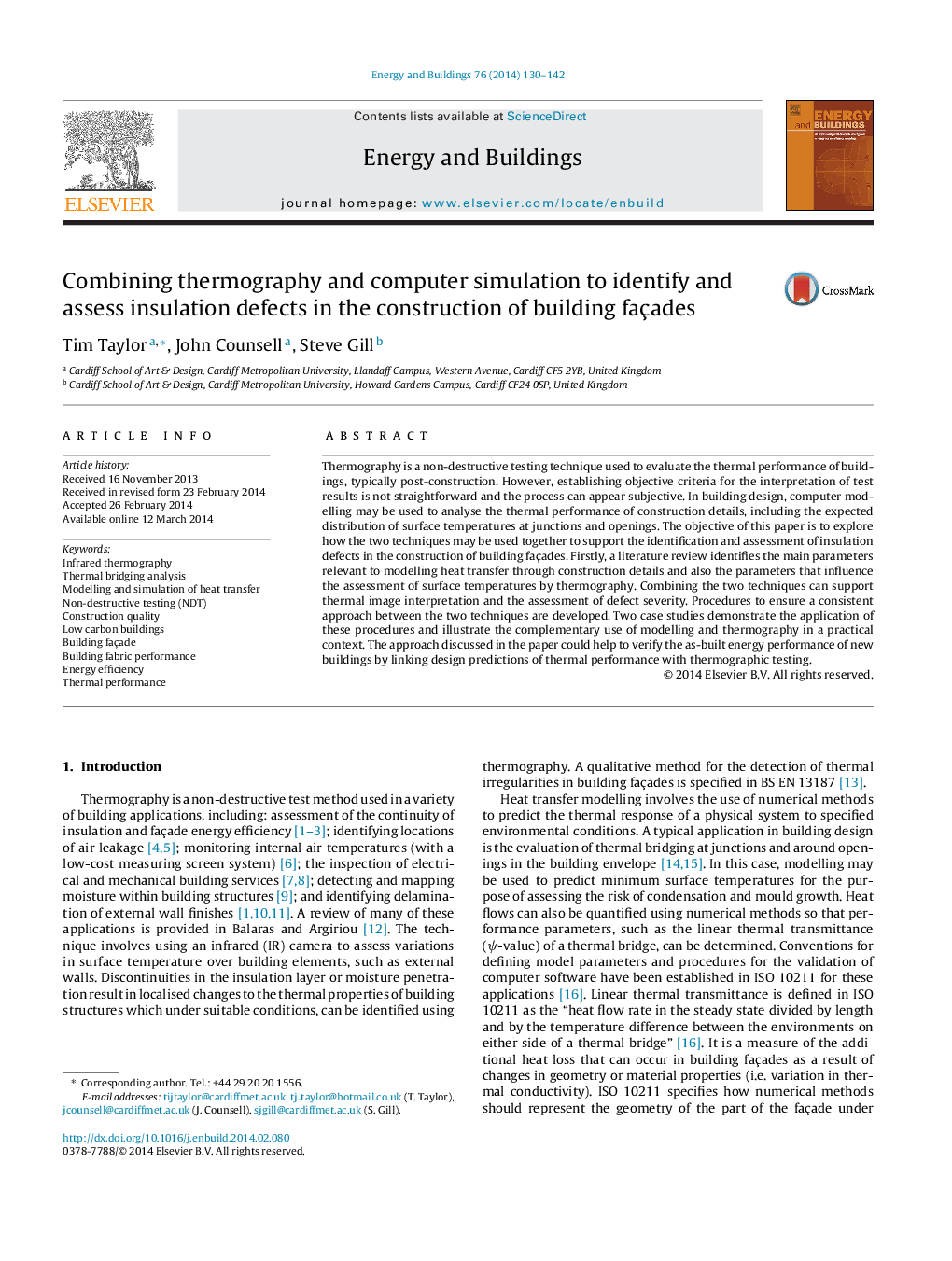| Article ID | Journal | Published Year | Pages | File Type |
|---|---|---|---|---|
| 6733593 | Energy and Buildings | 2014 | 13 Pages |
Abstract
Thermography is a non-destructive testing technique used to evaluate the thermal performance of buildings, typically post-construction. However, establishing objective criteria for the interpretation of test results is not straightforward and the process can appear subjective. In building design, computer modelling may be used to analyse the thermal performance of construction details, including the expected distribution of surface temperatures at junctions and openings. The objective of this paper is to explore how the two techniques may be used together to support the identification and assessment of insulation defects in the construction of building façades. Firstly, a literature review identifies the main parameters relevant to modelling heat transfer through construction details and also the parameters that influence the assessment of surface temperatures by thermography. Combining the two techniques can support thermal image interpretation and the assessment of defect severity. Procedures to ensure a consistent approach between the two techniques are developed. Two case studies demonstrate the application of these procedures and illustrate the complementary use of modelling and thermography in a practical context. The approach discussed in the paper could help to verify the as-built energy performance of new buildings by linking design predictions of thermal performance with thermographic testing.
Keywords
Related Topics
Physical Sciences and Engineering
Energy
Renewable Energy, Sustainability and the Environment
Authors
Tim Taylor, John Counsell, Steve Gill,
